Why whales are returning to New York City's once polluted waters 'by the ton'
The whales back are decades of cleanup, but scientists say there is more to do.
NEW YORK -- Growing up on his father’s boat off the Rockaways in Queens, New York, Tom Paladino was always on the lookout for whales.
“My father started a fishing business in 1945 when he came back from the service, so I never really had a job. I was just on the boat my whole life,” Paladino said as he steered his own boat, the American Princess, back to shore.
The giant animals rarely ventured into the city’s busy, dirty waterways, Paladino told ABC News, and “in the 60s, 70s, and 80s, we used to see one whale a year.”
But on a recent August Saturday, Paladino and Paul Sieswerda, the founder of the nonprofit Gotham Whale, spotted five humpbacks and more than 100 dolphins during a four-hour tour, just three miles off the Rockaways.
“People don’t really connect New York City with whales at all,” Sieswerda told ABC News. “I’ve been involved with wildlife all my life, and I am just so amazed it's coming back by the ton -- literally by the ton -- with whales.”
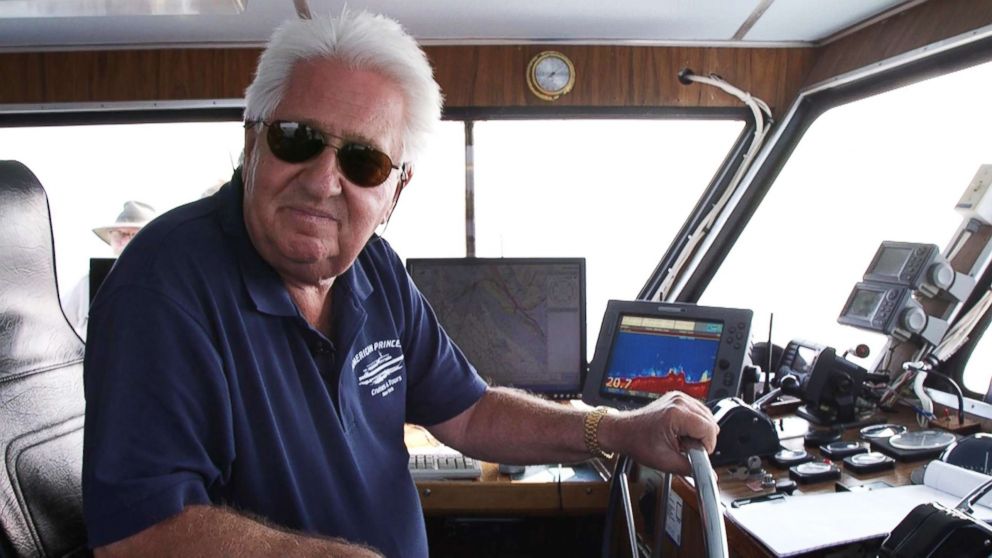
In 2011, when Sieswerda, 75, started leading whale watching tours after retiring from his job at the New York Aquarium, the group logged just three sightings with a total of five whales, he said. More than one whale can be present at any given sighting, he added.
“We called it a whale watch ‘adventure,’ because it was an adventure, if we were going to see whales or not,” said Sieswerda.“Then in 2014, the number of whales we saw was more than the previous three years put together.”
Sieswerda and his team of citizen scientists are out on the American Princess photographing and cataloging the whales they see nearly every week during humpback season, which ranges from May to November. In 2016, the group saw 195 whales during 190 sightings, he said. Gotham Whale maintains a database of the whales they have spotted in order to track both the individual animals and different species that come back year after year.
Each whale’s fluke is as unique as a human fingerprint, and Gotham Whale assigns each of them a number. But “sometimes, we can’t help ourselves from giving them nicknames,” Sieswerda admitted. Those include Gotham, K-Cup and Jerry, named for the Grateful Dead frontman. These are whales they have come to know and love after seeing them over and over again, and it's a sort of homecoming for a variety of species that once freely roamed the area, Sieswerda said.
"They were here back in pre-colonial times and then, of course, they were hunted out almost to extinction," he said. "But we think they're coming back now primarily to feed."
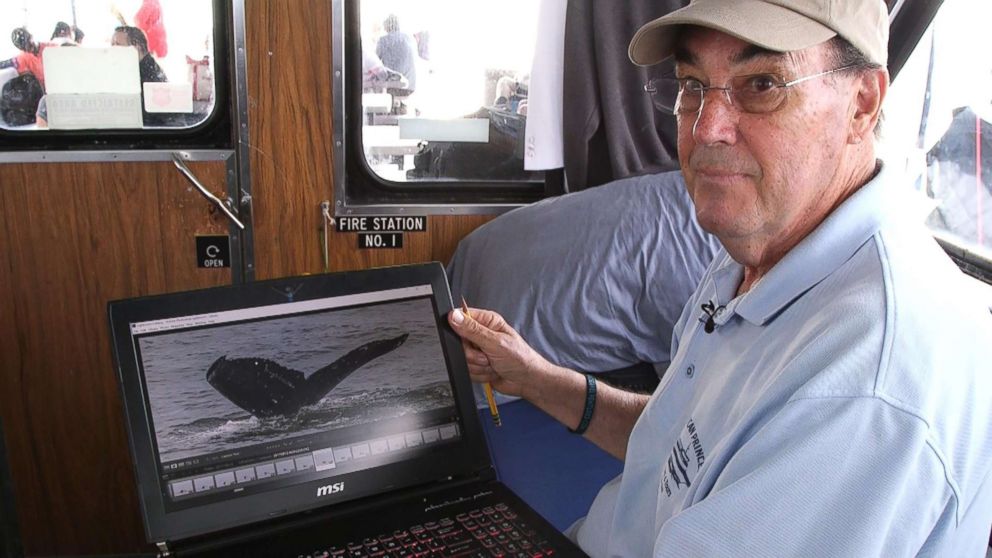
The return of the whales to New York City is a remarkable success story that is still being researched, scientists say. It has partly been made possible by state, local and federal policies including the Clean Water Act, the Endangered Species Act, and the Marine Mammal Protection Act that helped restore the food web.
“The water around New York is cleaner now than it has been in the past 100 years,” Ayana Elizabeth Johnson, a marine biologist and the founder of Ocean Collectiv, told ABC News. “Things have improved quite a bit since the Clean Water Act was put into place in the 70s, and we stopped dumping as much raw sewage and chemicals from manufacturing into our waterways.”
Before the late 1970s, millions of liters of untreated sewage were dumped into the waters around New York, which are known as the Hudson-Raritan estuary, according to a study published by the Coastal and Estuarine Research Federation. The pollution was once staggering, even earning one small body of water between the Gerritsen Inlet and Rockaway Inlet in Brooklyn the nickname "Dead Horse Bay."
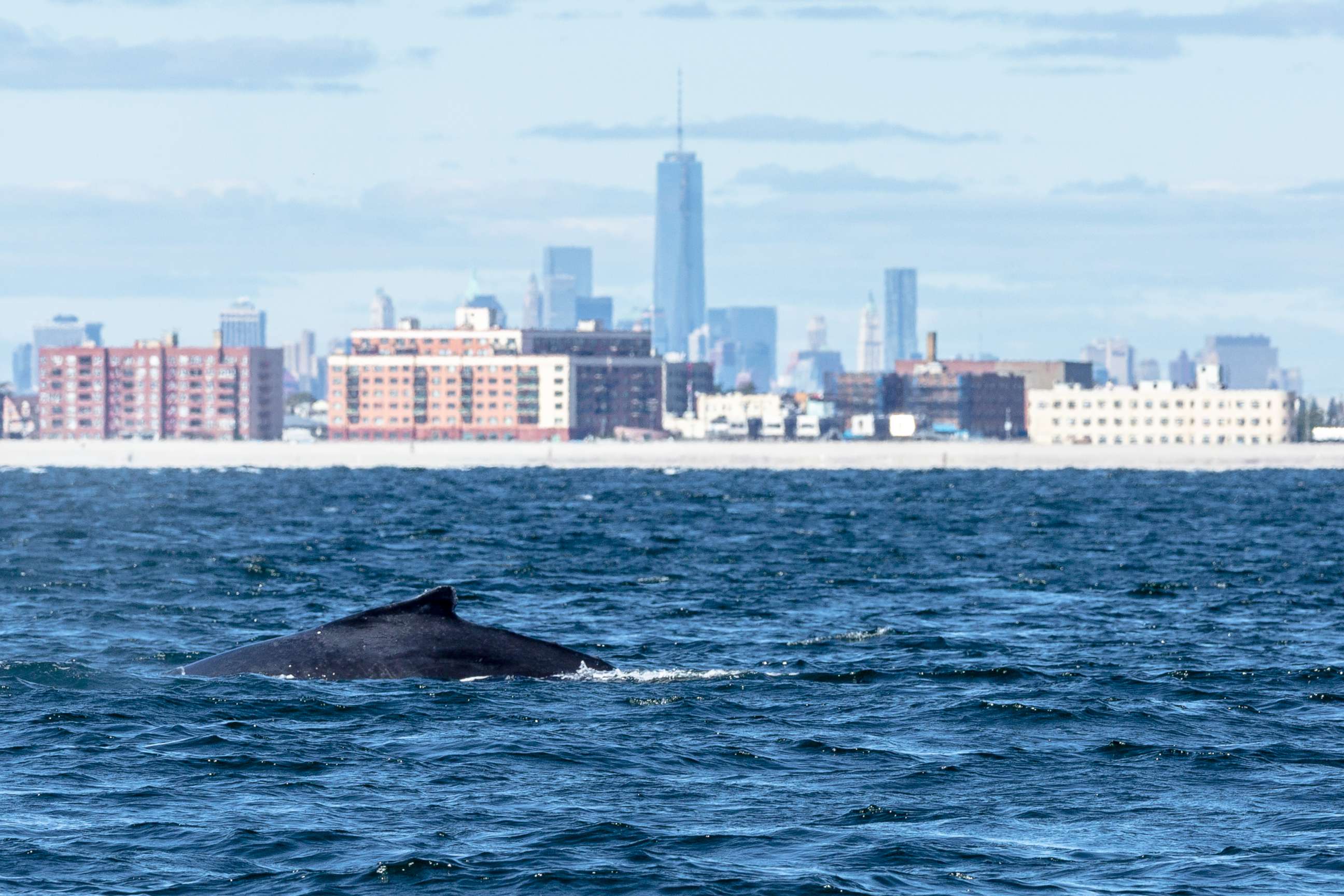
This contributed to high levels of coliform bacteria and lower levels of oxygen, a combination that had a major impact on the ocean’s food web. Fewer algae and plankton grew, and fewer small fish came to feed, the federation’s study found. Without a food source, bigger animals, including whales and dolphins, also stayed away. But as the waters became cleaner over several decades and limits were placed on fishing, the ecosystem bounced back -- and the whales returned. The waters are now also home to dolphins, several species of sharks and even seahorses.
“I think the waterways around New York City are actually a really nice success story,” Johnson said. “When you put measures in place to protect the ecosystem, it does recover.”
But scientists and advocates say that recovery was hard-won -- and they worry that proposals to roll back regulations could threaten the progress they’ve made.
'Come for the food, stay because it’s a friendly habitat’
Humpback whales are the predominant species seen in the western part of the New York Bight -- which stretches from Cape May, New Jersey, to Montauk, Long Island -- but minke whales, sperm whales, fin whales, sei whales and even the endangered North Atlantic right whale have also been spotted in the area, according to Howard Rosenbaum, the director of the Ocean Giants Program at the Wildlife Conservation Society.
“What a fantastic thing that some of the largest animals are just within the reach of one of the greatest cities in the world, and by boat often less than the distance of the average commuter’s trip home,” Rosenbaum told ABC News.
The increase in menhaden, also known as bunker, has particularly drawn the whales back to these waters. Like any good New Yorker, whales seem to know the best places to find their favorite cuisine, which is a small, oily fish not favored by humans. Menhaden have been called "the most important fish in the sea," however, because of how many other species depend on them for food, according to Pew Charitable Trust's Mid-Atlantic Conservation project.
“The types of whales we see depend on their migration paths and maybe also what’s on the buffet that time of year,” Johnson explained. “So, come for the food, stay because it’s a friendly habitat to live in -- that is our hope.”
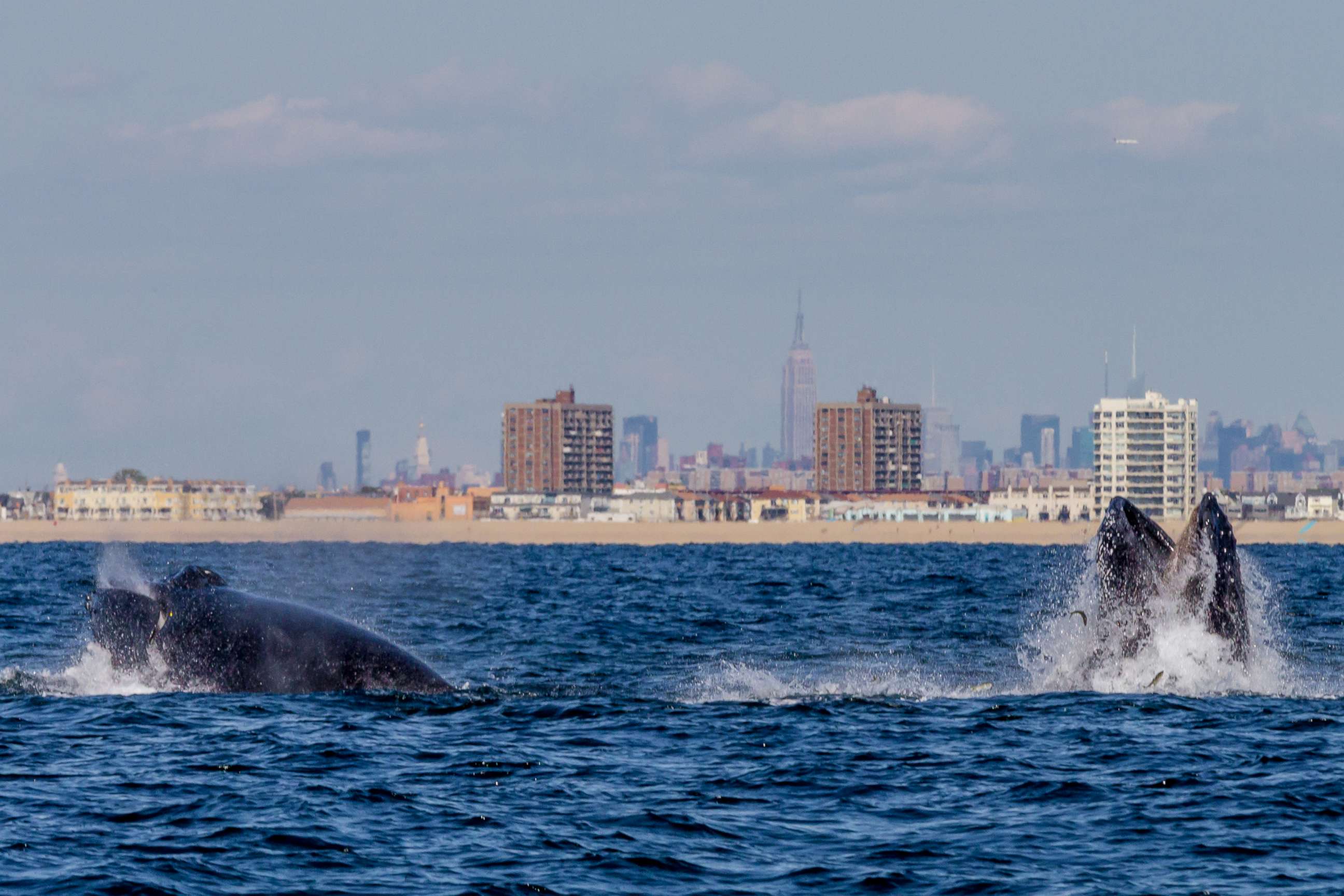
Whales have been seen in the more eastern parts of the New York Bight for a long time. But the return of whales to the waters around New York City is relatively new. In order to see what kind of whales are coming to the area in real time, Rosenbaum and his team worked with the Woods Hole Oceanographic Institution to launch a buoy that lets them listen in on the calls made by different species.
The buoy, called Melville, records the number of sei whales, fin whales, right whales and humpback whales’ vocalizations each day. So far, it’s detected 34 confirmed or possible instances of North Atlantic right whales vocalizing from October 2016 to April 2017.
Knowing what species are in the area -- and more about their migration patterns -- helps scientists learn about them as well as advocate for their safety in New York’s busy waterways, Rosenbaum said.
“It’s truly an amazing opportunity and recovery story,” Rosenbaum said. “It’s the ability to shape perceptions and change perceptions for New York and the surrounding environs.”
An ‘unusual mortality event’
Ensuring the waters around New York City remain a friendly habitat is a huge challenge, however. Whales have had to get used to the nuisances New Yorkers face, too, including navigating traffic and noisy waters.
“Whales and humans hopefully can get along well, but New York City is the major port on the Eastern Seaboard with a high activity of boat traffic. Big ships are coming in and out, and we see the whales in the same areas,” Sieswerda said. “Ship strike is a major problem for big whales.”
A number of dead humpback whales have washed up on beaches along the Eastern eaboard recently, leading the National Oceanic and Atmospheric Administration (NOAA) Fisheries to declare the phenomenon an “unusual mortality event” and launch an investigation into what is causing the increase in deaths. In 2016 and 2017 so far, 10 humpback whales have been stranded in New York and New Jersey, according to NOAA.
“We still don’t understand why that’s happening. What we do know of the 20 animals where a proper necropsy has been conducted, 10 of those showed signs of ship strike,” Rosenbaum said. “That’s of great concern. So while we’re seeing this recovery and have these great opportunities to see humpbacks, there are still things happening in their environment that we don’t understand.”
Ship strikes aren’t the only threats whales face. Too much underwater noise from other vessels can interfere with their ability to communicate with each other, Rosenbaum added.
“These communications are essential during certain life stages for these whales -- including between mother and calf -- in terms of migration or feeding,” Rosenbaum said. “If they are changed in any way, they could have an impact on an animal’s ability to survive, particularly at a young age. If this noise is occurring where these animals feed or breed, it has an impact on an animal's ability to take those actions.”
Whales respond to the increase in noise in a variety of ways, Rosenbaum said. He said studies on various species have shown that met with this noise pollution, animals will attempt to call louder and louder to overcome it, just go quiet or move out of the area entirely. In some cases, ocean noise pollution can even cause hearing loss or other physiological damage in animals, Rosenbaum added.
Johnson, Rosenbaum and other scientists say that researching how whales and humans interact in busy waterways -- and then taking steps to reduce harm -- is crucial if New York City wants to remain a whale-friendly destination.
It’s also about “the political will to use that research to make good policy decisions that can balance the need for shipping, tourism, and industry, but also conservation,” Johnson said.
’We don’t want to go backward from here’
Scientists are quick to point out that New York’s success in cleaning up its waters and bringing back the whales has been decades in the making -- and they don’t want to see that progress reversed.
“As we witness these amazing opportunities to see marine mammals in habitats just outside of New York City, we’re also confronted with some of the most important elements of new threats and challenges these animals could face in the years to come,” Rosenbaum said.
Some of those new threats include offshore oil and gas exploration in parts of the Atlantic Ocean, which was banned under the Obama administration but is now being reconsidered under President Trump.
Obama’s ban cited the area’s “critical and irreplaceable ecological value” and the need to protect wildlife, including whales, according to a fact sheet from the Department of the Interior. At the time, the White House also cited protecting existing commercial and recreational fisheries as crucial.
“Prior to leaving office, the Obama administration decided not to go ahead with offshore oil and gas exploration and development in the Atlantic Ocean,” Rosenbaum said. “That was both in part due to the wildlife issues, but as we understand it, tourism and seafood industries also had some say in weighing in about the impact of oil and gas development in this ocean basin.”
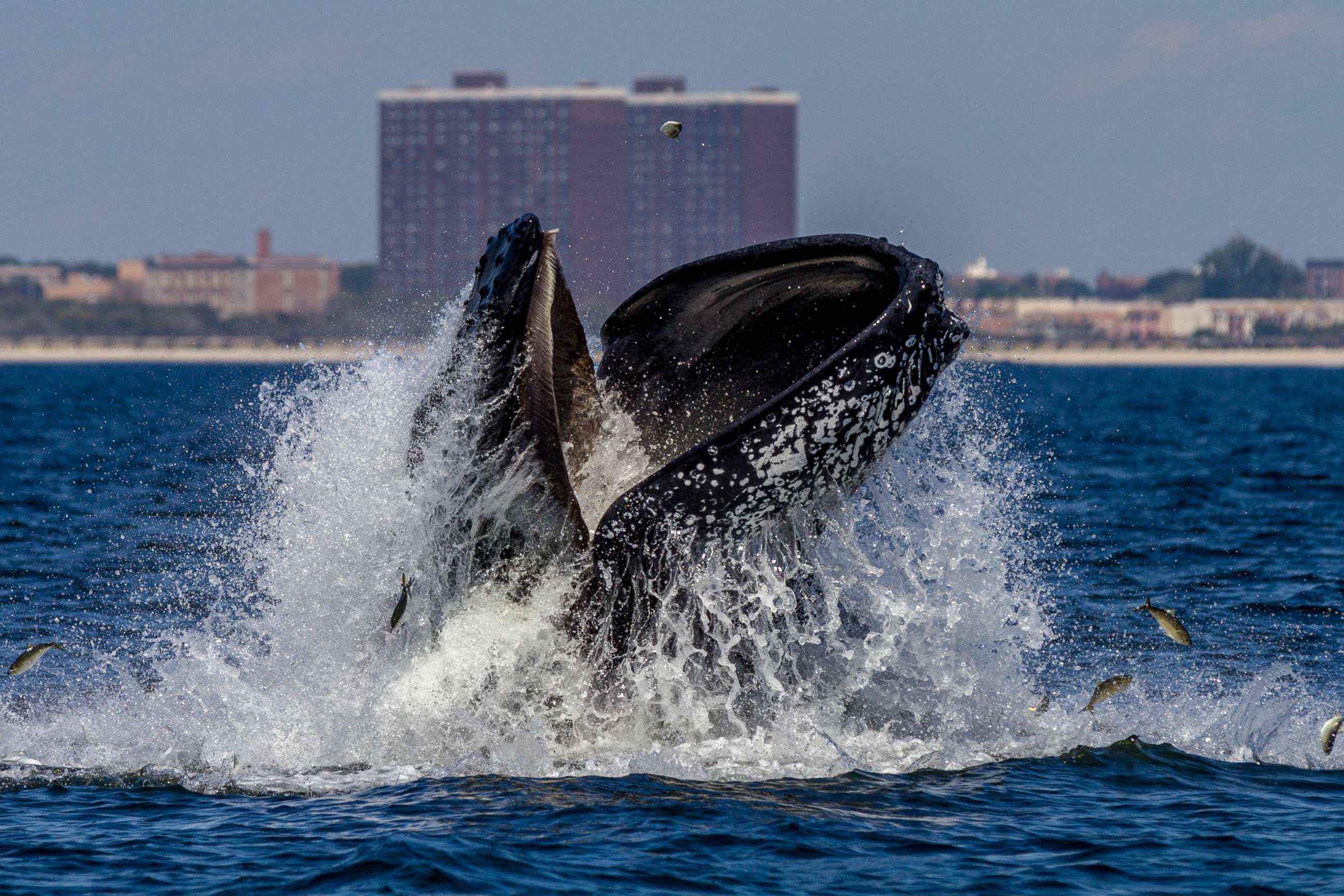
But the Trump administration has already sought permission to explore the area for oil and natural gas formations.
“In essence, after a several-year approach to work with our colleagues on the scientific level to bring up these issues, as well as on the grassroots and environmental efforts with the previous administration, we’re back at the start again with the Trump administration. And they have already stated that there is an interest to open the Atlantic for offshore oil and gas exploration,” Rosenbaum added.
Underwater air explosions used to examine areas for potential oil and natural gas deposits can also interfere with whales’ ability to communicate, he said.
And such oil and gas development could have a particularly negative impact on the endangered North Atlantic right whale, Rosenbaum said. NOAA estimates that there are fewer than 500 North Atlantic right whales left in the western North Atlantic region. The species is one of the most “critically endangered” in the world according to the agency.
“They already face myriad threats, from getting entangled in fishing nets to being struck by ships, and then if you introduce this element into the environment, it could actually reduce its ability to live and its health. That’s a very serious and great concern,” Rosenbaum said.
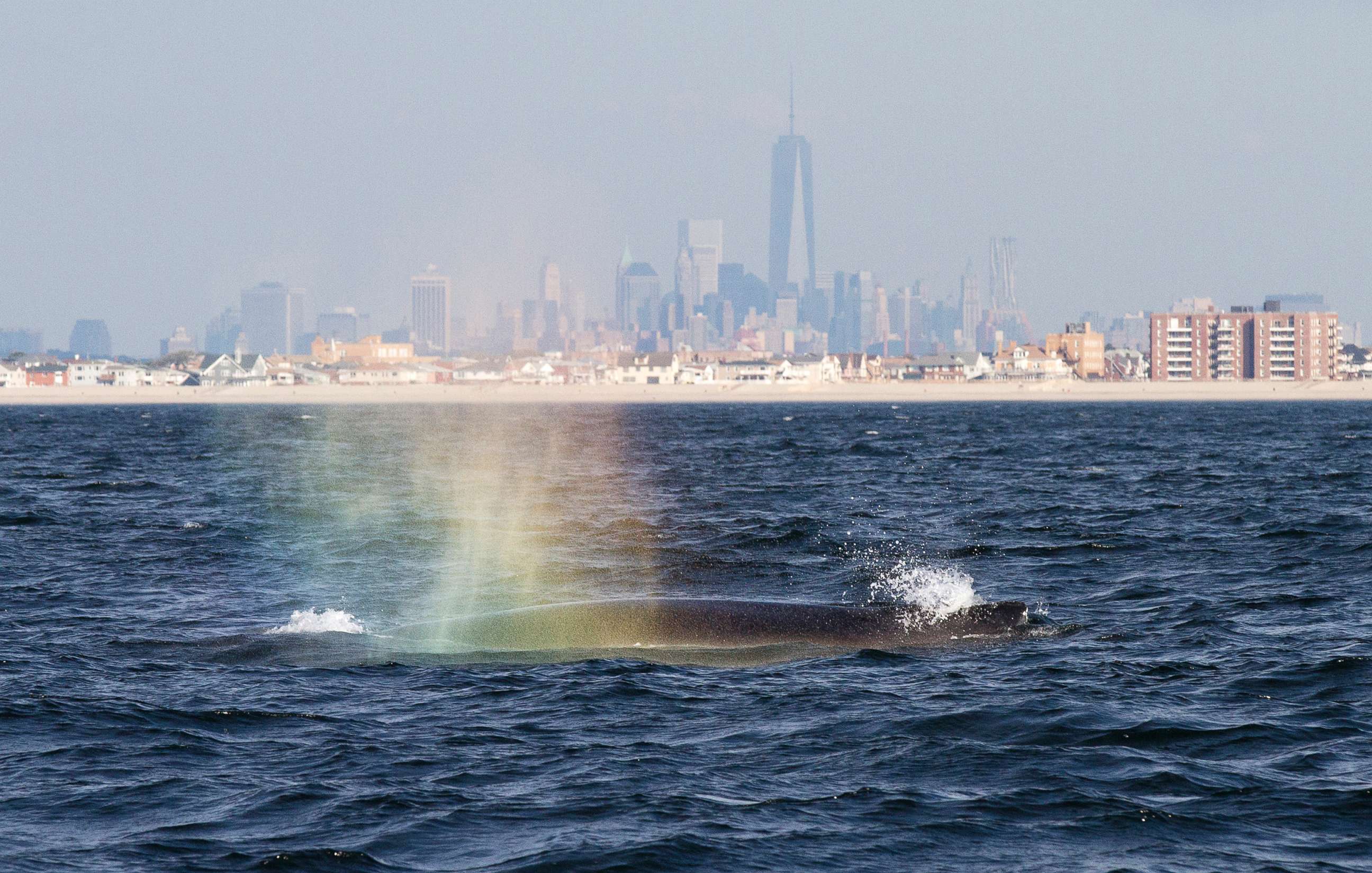
In June, the Trump administration also moved to roll back the Clean Water Rule, which protects streams and other smaller waterways sparking concerns that pollution could once again find its way into places like the Hudson-Raritan estuary.
As it stands now, during heavy rains or major storms, wastewater still sometimes overflows untreated into the rivers, Johnson said.
“There’s certainly a lot more achievements we would like to see. The waters are not as healthy as they could be for swimming or fishing yet, but things are definitely heading in the right direction,” Johnson said. “As a general rule, I would be concerned if we start to take steps backward because yes, if we weaken these regulations, that would certainly indicate that we will see the quality of the waters go down again. It took a long time for things to improve around New York City.”
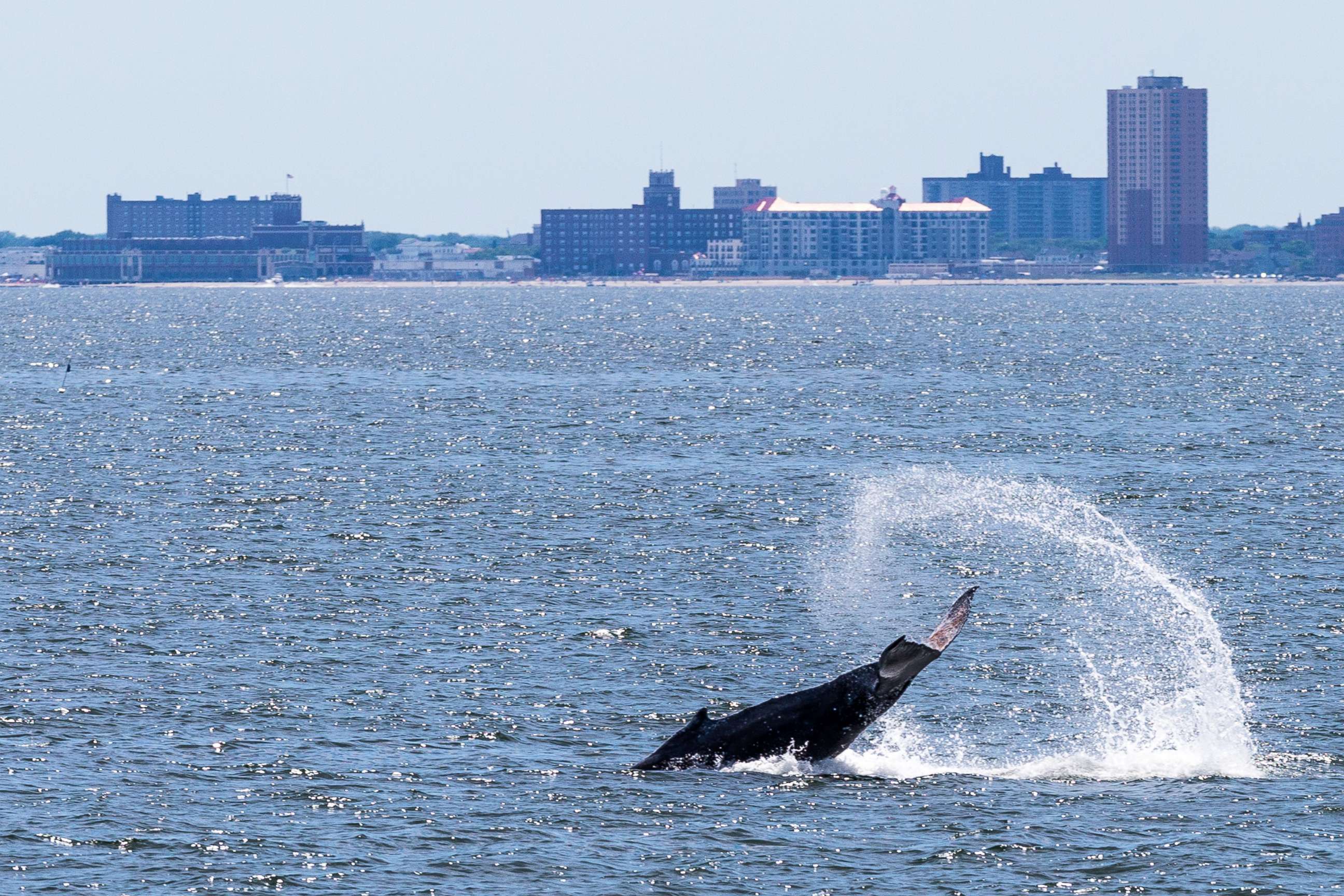
Rosenbaum said getting the public involved is crucial. When people have the chance to experience seeing a whale off the shores of New York, they can be more invested in pushing for the policies that could help keep them there.
“There’s an opportunity to reshape and rethink what might be termed as a ‘nature deficit disorder’ here in New York,” Rosenbaum said. “We can have people think, ‘Wow, there are great opportunities and elements of New York in terms of the environmental progress that has been made over the last several decades.”
“We have seen the recovery through important environmental legislation and stewardship, and we don’t want to go backward from here. It’s an important time in terms of how industry and various marine resource users use the ocean,” he added. “What I hope is that all of these issues that have the greatest weight given to the environmental piece possible.”
Educating New Yorkers about their local waterways and ocean -- and their giant new neighbors -- is key, Johnson added.
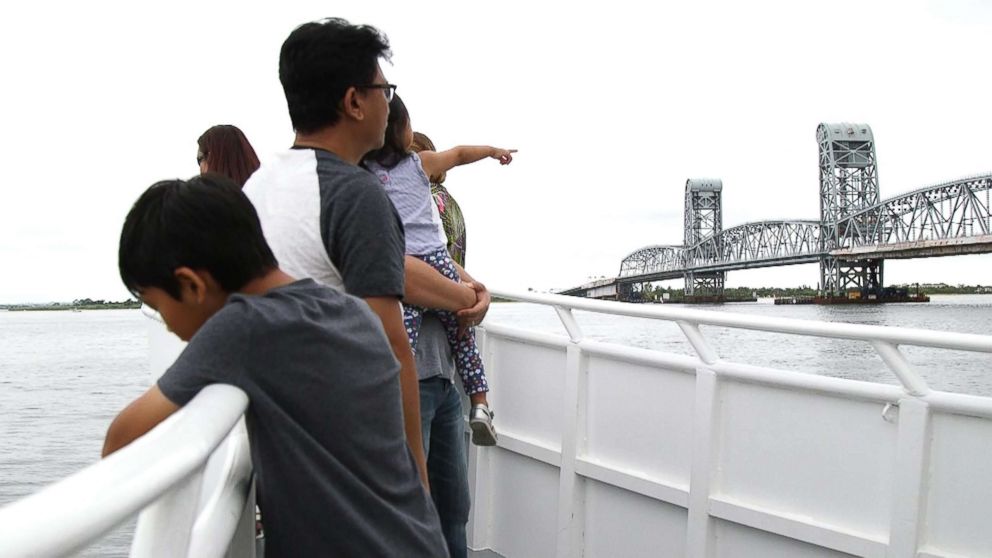
“For me, one of the next big steps in ocean conservation is urban ocean conservation -- what does it look like to actually have vibrant and thriving oceans right next to cities? Because so many people live in cities on the coasts now that we need to figure that out too,” Johnson said.
Back in the Rockaways, Paladino tied off the American Princess and waved goodbye to the chattering tourists who walked off his boat with smiles on their faces and thumbs flicking through the photos of the whales on their smartphones.
Even though Paladino and Sieswerda are out on the water nearly every weekend, they said the juxtaposition of whales coming up to feed in front of the Manhattan skyline is a sight that never gets old.
“When we’re out there hunting for the whales, we don’t really have them under our terms, we observe them under their terms,” Sieswerda said. “It’s exciting to see a whale completely breach and bring 40 tons of animal up out of the water. We like to say they're jumping for joy.”




